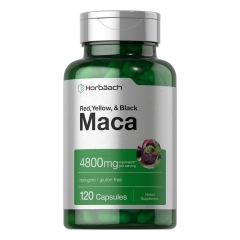-
 Thanh toán đa dạng, linh hoạtChuyển khoản ngân hàng, thanh toán tại nhà...
Thanh toán đa dạng, linh hoạtChuyển khoản ngân hàng, thanh toán tại nhà... -
 Miễn Phí vận chuyển 53 tỉnh thànhMiễn phí vận chuyển đối với đơn hàng trên 1 triệu
Miễn Phí vận chuyển 53 tỉnh thànhMiễn phí vận chuyển đối với đơn hàng trên 1 triệu -
 Yên Tâm mua sắmHoàn tiền trong vòng 7 ngày...
Yên Tâm mua sắmHoàn tiền trong vòng 7 ngày...
Epic Eggs: The Poultry Enthusiast's Complete and Essential Guide to the Most Perfect Food
-

- Mã sản phẩm: 0760352224
- (32 nhận xét)

- Publisher:Voyageur Press; Illustrated edition (November 1, 2017)
- Language:English
- Paperback:160 pages
- ISBN-10:0760352224
- ISBN-13:978-0760352229
- Item Weight:1.5 pounds
- Dimensions:8.25 x 0.5 x 10.25 inches
- Best Sellers Rank:#1,450,202 in Books (See Top 100 in Books) #368 in Urban Gardening (Books) #695 in Bird Care #1,128 in Pet Food & Nutrition
- Customer Reviews:4.7 out of 5 stars 33Reviews

Mô tả sản phẩm
From the Publisher

The Art of Raising Chickens... And Eggs
Did you know that just like tomatoes, eggs are seasonal?
In nature, a chicken lays the most eggs in the spring. This flow continues through summer and usually stops altogether in the fall, when the birds molt. Egg laying is directly related to the number of daylight hours, so when the molt is over, the chickens often settle in for a break during the winter months. Nature intended for a chicken’s body to work this way. Eggs are a biological means for producing young, and a chicken lays eggs to continue her species, not to provide us with breakfast. So a chicken doesn’t naturally produce offspring in the dead of winter.
During the winter months, a chicken’s system can be tricked into thinking it’s still summer by providing additional light. With an artificial light source, chickens will continue to lay throughout the winter. However, the eggs will not be the same as the eggs of summertime, just as strawberries purchased in February do not taste like fresh-picked strawberries in June.
In the summer, our chickens free-range. They eat grass and bugs and get plenty of sunshine, and as a result, summer eggs are abundant and delicious. The yolks are bright orange, rich, buttery, dense, and full of nutrients.
Getting Started With Chickens

Step 1: Check on the Legalities
The first step is to make sure that chickens are legal in your area. I’ve read countless, heartbreaking stories about people attempting to raise chickens in neighborhoods or cities where they are not allowed. Called before a city council or township board to make their case, the families are all too often forced to give up their flocks. It is much better to know what your community allows before beginning.

Step 2: Decide on Breeds
The next step is to research breeds. There are hundreds of breeds of chickens, each developed and domesticated for a different purpose. Some chickens are productive egg layers; others lay eggs with unique, interesting colors. Some were bred for meat, and others, like the Polish with its crested head, have beautiful plumage that is really the main reason for keeping them.

Step 3: Plan Your Coop
The nice thing about raising chickens is that it’s almost as easy to raise three as it is to raise six or twelve or twenty. Once you have the coop, the feeders, and the waterers, it’s just as easy to scoop out feed for ten chickens as it is to feed two. You are only limited by the size of your coop and run.

Step 4: Establish a Food and Watering Plan
As chickens become more and more popular, more and more chicken feeds are coming on the market. Some are designed for young chicks, some for young pullets and cockerels, some for meat birds, and some for laying hens. There are also organic feeds, feeds designed to encourage feather growth, feeds that add omega nutrients to eggs, show bird feeding . . . the list goes on. You also have the choice of feed mash, crumbles, pellets, or whole-grain feeds. Some chicken keepers decide to forgo feed altogether, relying instead on rotational pasture feeding to raise their flock.

The Humble Egg
Until I started raising chickens, I didn’t appreciate eggs. I didn’t give them the credit that they deserve. They were an everyday item that was added to my grocery list, something to eat with bacon or add to a cake recipe. I didn’t see them as a capsule of potential, something capable of perpetuating a species and bringing forth a new generation. The egg is humble, concealing its wonder in a quiet stillness, until one day it bursts open with life.
Other Poultry And Their Eggs

Ducks
After chickens, ducks are probably the most popular backyard bird. Like chickens, ducks are usually raised for eggs or meat, or kept as pets.

Turkeys
I’ve raised Black Spanish turkeys since 2009, and have found them to be easy and pleasant birds to keep, in many ways a perfect backyard pet. As large birds, however, they require a lot of space.

Geese
Geese were originally bred for meat, as guard birds, and for their feathers. But goose meat is a rarity on today’s menus, and although goose down is still used, synthetic materials are quickly gaining popularity. On top of that, geese require a lot of space to prosper.

Guineas
Guineas seem like the soldiers of the farm to me. They march around in their little football shape, sounding off whenever something isn’t right in the yard. Guineas are tough little birds.
- Mua astaxanthin uống có tốt không? Mua ở đâu? 29/10/2018
- Saffron (nhụy hoa nghệ tây) uống như thế nào cho hợp lý? 29/09/2018
- Saffron (nghệ tây) làm đẹp như thế nào? 28/09/2018
- Giải đáp những thắc mắc về viên uống sinh lý Fuji Sumo 14/09/2018
- Công dụng tuyệt vời từ tinh chất tỏi với sức khỏe 12/09/2018
- Mua collagen 82X chính hãng ở đâu? 26/07/2018
- NueGlow mua ở đâu giá chính hãng bao nhiêu? 04/07/2018
- Fucoidan Chính hãng Nhật Bản giá bao nhiêu? 18/05/2018
- Top 5 loại thuốc trị sẹo tốt nhất, hiệu quả với cả sẹo lâu năm 20/03/2018
- Footer chi tiết bài viết 09/03/2018
- Mã vạch không thể phân biệt hàng chính hãng hay hàng giả 10/05/2023
- Thuốc trắng da Ivory Caps chính hãng giá bao nhiêu? Mua ở đâu? 08/12/2022
- Nên thoa kem trắng da body vào lúc nào để đạt hiệu quả cao? 07/12/2022
- Tiêm trắng da toàn thân giá bao nhiêu? Có an toàn không? 06/12/2022
- Top 3 kem dưỡng trắng da được ưa chuộng nhất hiện nay 05/12/2022
- Uống vitamin C có trắng da không? Nên uống như thế nào? 03/12/2022
- [email protected]
- Hotline: 0909977247
- Hotline: 0908897041
- 8h - 17h Từ Thứ 2 - Thứ 7
Đăng ký nhận thông tin qua email để nhận được hàng triệu ưu đãi từ Muathuoctot.com
Tạp chí sức khỏe làm đẹp, Kem chống nắng nào tốt nhất hiện nay Thuoc giam can an toan hiện nay, thuoc collagen, thuoc Dong trung ha thao , thuoc giam can LIC, thuoc shark cartilage thuoc collagen youtheory dau ca omega 3 tot nhat, dong trung ha thao aloha cua my, kem tri seo hieu qua, C ollagen shiseido enriched, và collagen shiseido dạng viên , Collagen de happy ngăn chặn quá trình lão hóa, mua hang tren thuoc virility pills vp-rx tri roi loan cuong duong, vitamin e 400, dieu tri bang thuoc fucoidan, kem chống nhăn vùng mắt, dịch vụ giao hang nhanh nội thành, crest 3d white, fine pure collagen, nên mua collagen shiseido ở đâu, làm sáng mắt, dịch vụ cho thue kho lẻ tại tphcm, thực phẩm tăng cường sinh lý nam, thuoc prenatal bổ sung dinh dưỡng, kem đánh răng crest 3d white, hỗ trợ điều trị tim mạch, thuốc trắng da hiệu quả giúp phục hồi da. thuốc mọc tóc biotin























 KHUYẾN MÃI LỚN
KHUYẾN MÃI LỚN Hỗ Trợ Xương Khớp
Hỗ Trợ Xương Khớp Bổ Não & Tăng cường Trí Nhớ
Bổ Não & Tăng cường Trí Nhớ Bổ Sung Collagen & Làm Đẹp
Bổ Sung Collagen & Làm Đẹp Bổ Thận, Mát Gan & Giải Độc
Bổ Thận, Mát Gan & Giải Độc Chăm Sóc Sức khỏe Nam Giới
Chăm Sóc Sức khỏe Nam Giới Chăm Sóc Sức khỏe Nữ Giới
Chăm Sóc Sức khỏe Nữ Giới Chăm sóc Sức khỏe Trẻ Em
Chăm sóc Sức khỏe Trẻ Em Thực Phẩm Giảm Cân, Ăn Kiêng
Thực Phẩm Giảm Cân, Ăn Kiêng Bổ Sung Vitamin & Khoáng Chất
Bổ Sung Vitamin & Khoáng Chất Bổ Tim Mạch, Huyết Áp & Mỡ Máu
Bổ Tim Mạch, Huyết Áp & Mỡ Máu Bổ Mắt & Tăng cường Thị lực
Bổ Mắt & Tăng cường Thị lực Điều Trị Tai Mũi Họng
Điều Trị Tai Mũi Họng Sức Khỏe Hệ Tiêu hóa
Sức Khỏe Hệ Tiêu hóa Chăm Sóc Răng Miệng
Chăm Sóc Răng Miệng Chống Oxy Hóa & Tảo Biển.
Chống Oxy Hóa & Tảo Biển.